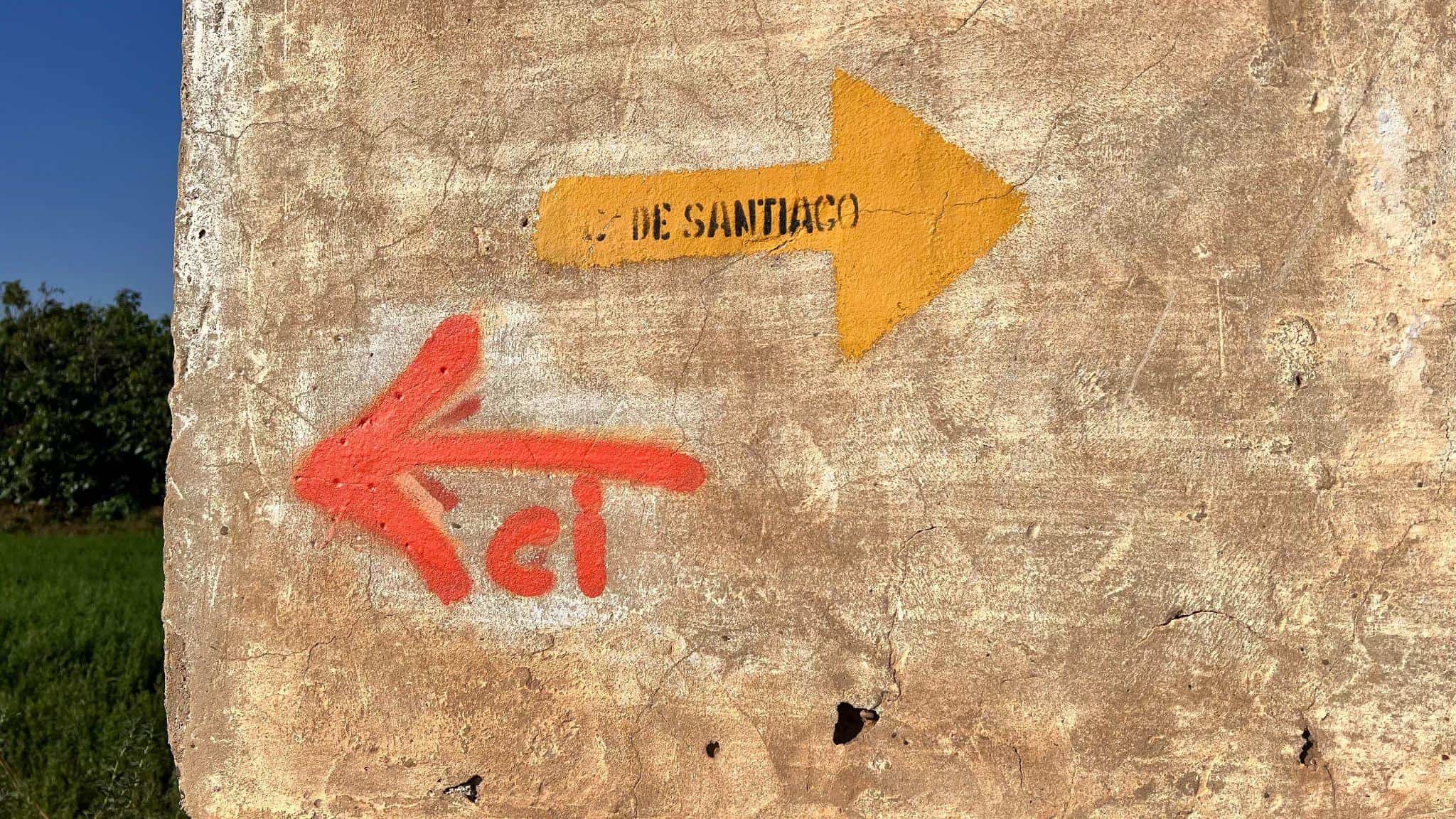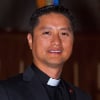July 31, 2022, marked the end of the Ignatian Year, a time that Jesuits and our collaborators around the world celebrated 500 years after the conversion of St Ignatius of Loyola. Ignatius had sustained injuries from a cannonball defending the city of Pamplona. During his convalescence, he experienced a conversion in his faith. After recovering, he spent a year in Manresa, Spain writing the first draft of the Spiritual Exercises.
Today, many pilgrims follow the footsteps of St. Ignatius on this journey called the Camino Ignaciano, or the Ignatian Way. This pilgrimage involves many weeks of walking. The routine of the journey, the early mornings, the rituals of finding lodging, and the challenges are part of an experience that disconnects us from our troubles back home. It is a spiritual journey that helps us to understand ourselves and our relationship with God. It is a chance to pray and to encounter God in simple things, like a sunrise. In the summer of 2022, I walked the Camino Ignaciano with a Jesuit friend and three young adults. This 130-mile journey began in Zaragoza and ended in Loyola and took us about two weeks. Zaragoza is about halfway between Loyola and Barcelona which made the trip manageable for our group.
On the second day of our walk, we entered a little village called Luceni. At the entrance of the town, we found a statue that commemorated one story in St Ignatius’ autobiography, where he let his mule decide the path he should take. One path would lead him to defend the honor of the Virgin Mary. The other was to continue on his journey towards the Holy Land. Near the entrance of this town was a small statue of two men, one on a mule and the other on a horse. Had we been driving, I’m sure we would have missed this small landmark. Here’s how the plaque on the statue explains the significance of this event:
Íñigo had just started his life as a pilgrim [when] he met a Muslim. They began to talk about the virginity of Mary… The Pilgrim was left wondering if he had not sufficiently defended Mary’s honor, and wondered if he should not “stab him” (Aut 15). He retraced his steps and… leaving it to God, through his mule, to decide on the Muslim’s fate. With the reins loose, the mule did not take the path of the fork… The decision of the mule saved the life of the Muslim and Íñigo from his own indignation. (Discernment on the Way)
We Jesuits joke that since this day, mules have been making important decisions for the Society of Jesus. Joking aside, reflecting on this statue and my experience on the Camino Ignaciano has helped me grow in a greater appreciation of letting go of the reins and allowing God to work through the people (or animals) in my life. It also means letting go of my ego and embracing outcomes that are not of my choosing. This applies to my journey on the Camino Ignaciano and my vocation as a Jesuit.
In the planning phase, I expected to walk the entire journey. I expected there to be comfortable, convenient lodging along the way. I planned to start each day at a reasonable hour with ample time for a light breakfast before getting on the road. I hoped we would finish the walk with sufficient time to enjoy dinner and explore our surroundings. I’d expected fun meals that would refresh us from our journey when we’d make lively conversations.
However, the reality was usually quite different from my expectations. There was a heatwave that affected most of Western Europe in the summer of 2022. I anticipated warm summer weather, but what we experienced was record-breaking heat. Somedays the temperature was over 115 degrees Fahrenheit. To cope, we woke up before dawn and got on the road by 5:30 am to take advantage of the cooler weather. No breakfast, no good mornings, and worst of all, no coffee. Just the darkness to greet us.
The darkness presented an additional risk because there were times we had to walk narrow highways while avoiding fast-moving vehicles. One morning, we walked on a relatively busy highway in single file. I took the lead and my companions kept close to me. We walked facing traffic so we could see the oncoming traffic while waving our headlights so the cars could avoid us. Suddenly a car came dangerously close behind us as it was trying to pass a slow-moving truck on the opposite side. It was a scary encounter that left us a bit breathless and more weary of our predicament. After that incident, we made sure that the person in the rear was also waving a flashlight to help passing traffic see us.
However, there was no way to escape the sweltering heat. Temperatures reached the mid 90’s by 11 am. It slowed us down and took a toll on our feet, our backs, and our morale. We took breaks as often as we could, finding shade under a lone tree in the vast fields of wheat. We drenched our heads and shirts every time we entered a small village with a public water fountain soaking up the coolness of the water and rehydrating as best as we could. Lingering at the water fountain was the highlight of late mornings. Finding them was like winning the lottery. In retrospect, the time spent at these fountains was joyful and full of excitement about our day. We had our best conversations at these fountains because they gave us a chance to talk and reflect while we were still fresh. It rejuvenated the spirits of this small band of pilgrims.
Lodging wasn’t as convenient as I had hoped for either. Many times, the small towns and villages we crossed had no accommodations. To get a good night’s rest, we made detours to adjacent towns, adding two to five miles to our journey, not such a big deal if we were walking in temperate weather. Had we been driving, no one would have thought about it. However, the heat made these detours feel so far. Our last few miles took four times as long as our first miles. There were some days when we made it into town before sunset. Completely exhausted and hungry; we’d shower, find food, do a short reflection, and find our way to bed (not always in that order).
We had reached a breaking point two days before reaching Loyola. One member of our group had been struggling with stomach flu. All of us were literally burnt out because of the unrelenting heat. Collectively, we decided that a change of plans was necessary. We weren’t going to complete the journey on our own two feet. We needed the help of modern transportation. Although it wasn’t a difficult decision, it was still something that we had to consider because it felt a little like cheating. It was a moment when we let the mule decide. The mule decided that we had had enough and that this heat wave had defeated us. Mule’s decision was that we’d take a train, a bus, a taxi, or whatever we could to reach our final destination; walking was no longer an option.
Letting go of my expectations or my desire for perfection hasn’t always been easy. Ten years ago, I would have convinced myself and the group that we needed to keep walking, that we might miss the opportunity to accomplish something monumental. However, taking a page from St Ignatius, I’ve learned to let things go. I gave God the reins and trusted that no matter what, there would be abundant grace. Letting go meant that I was able to do what was best for the group, despite what my ego would have wanted. Letting go also meant recognizing and valuing the needs of everyone in the group. This wasn’t my journey alone, it was our journey. At the end of the day, it was the best decision we made.
I didn’t get everything the way I had expected. But in my Examen I looked back on the experience with gratitude, I found that God had given me everything I desired. We had fruitful and stimulating conversations, not at the dinner table, but at the many shady water fountains each day. We didn’t get breakfast before starting our walk, but we got to take our time and enjoy our pastries and coffee with the locals in little towns and villages. We didn’t finish the whole journey on foot, but we were rejuvenated and ready for the next part of our trip. We arrived at Loyola in one piece.
Everyone was healthy, and we enjoyed our time in St Ignatius’ hometown. Praying in the room where Ignatius had convalesced, Chapel of the Conversion, I experienced peace and consolation for the opportunity to be there on the 500-year commemoration of his conversion in the very room. I am grateful that Ignatius devoted his life to God in such a radical way and am hopeful that by following in his footsteps, I too will continue to let the mule decide.


